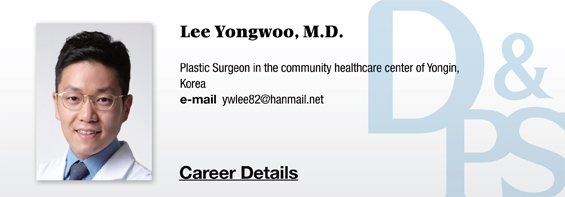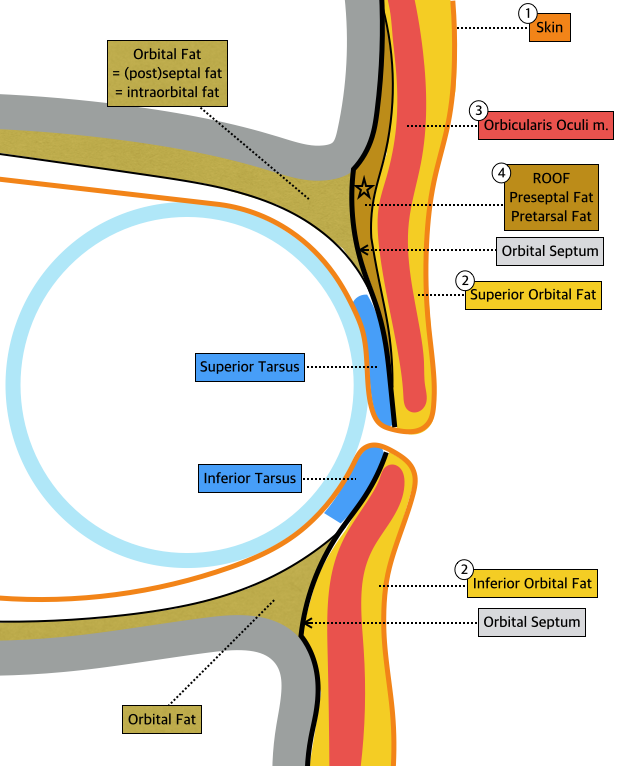
One should take particular caution to avoid bleeding and lumps when injecting filler or fat in sunken eyelids. If the orbital septum is not punctured, lacrimal gland damage is not a concern as it lies deeper than the orbital septum to the upper lateral side and is surrounded in orbital fat. Vision loss, the most problematic complication of filler or fat injection, is very rare. Ironically, although sunken eyelids lie very close to the eyes, injection in this area has not been reported to cause vision loss. On the surface of the orbital septum, the lateral and medial palpebral artery and vein form an arcade but as these blood vessels are thin, they are more likely to rupture due to pressure from the needle or cannula tip. The chance of filler or fat being injected into and transferred by these blood vessels are very low. The supraorbital artery and supratrochlear artery ascend hugging the supraorbital rim through orbital septum. Therefore, as shown in <Image 2>, one should maintain distance from the orbital rim when correcting the medial side of sunken eyelids. The supraorbital rim is still an ideal site of filler or fat injection, however, caution is needed.
[Advertisement] FCR® (Fractional Prickle CoralCalcium Regentron) – Manufacturer: (www.illglobal.com)]
Pretarsal Fullness
In Asians, full lower eyelids are considered to be youthful and cute. What causes pretarsal fullness has not been clarified but the preseptal part of the OOM riding over the pretarsal part may create pretarsal fullness. Hypertrophy of the OOM may be another reason, which can be triggered by habitual squinting. Pretarsal fullness is more pronounced in a smile. A study conducted in China reported that 20% of people had static pretarsal fullness and 70% had dynamic pretarsal fullness (occuring only when smiling). Pretarsal fullness is thin (about 6mm) in the 20s but its vertical height increases with age (7.5mm in the 40s and 8mm in the 50s). This is due to the downward drooping of the pretarsal part of the OOM further away from the tarsus and increased OOM hypertrophy with age. Pretarsal fullness is the symbol of youthfulness but it is most pronounced in people in their 40s due to OOM hypertrophy and subcutaneous tissue thinning. When the OOM loses tension the fullness drastically decreases in the 50s.

Image 1. Anatomy of upper and lower eyelids.

Image 2. Recommended injection site for sunken eyelid.
-To be continued-




















